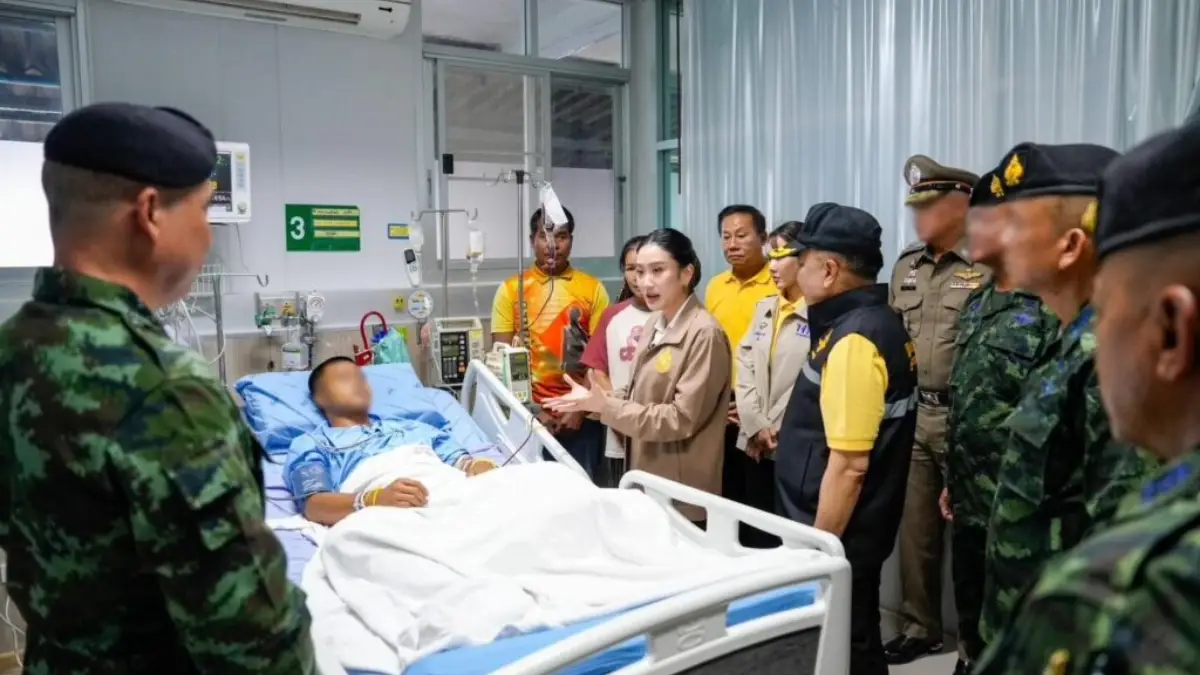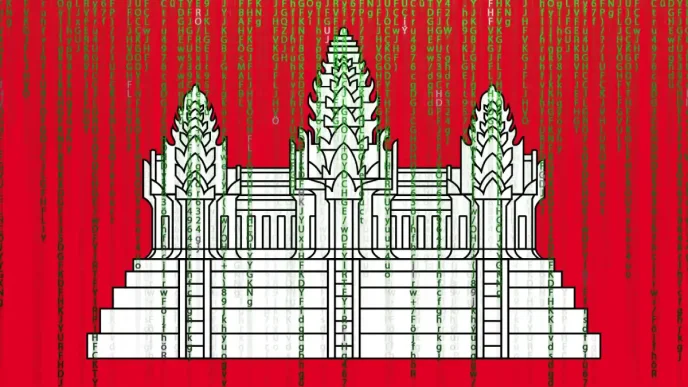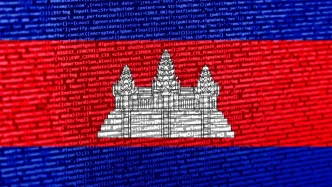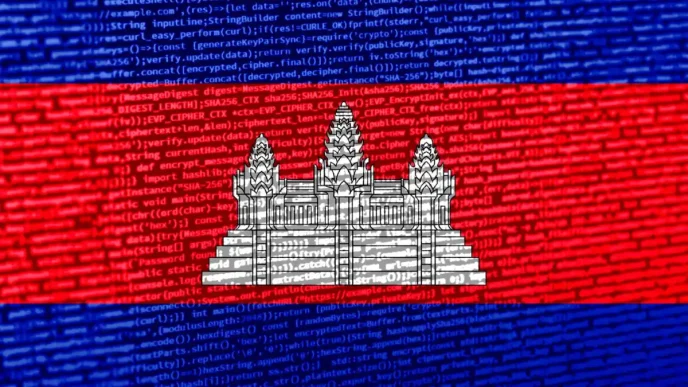Three Thai soldiers were injured on July 16, 2025, after stepping on a landmine while patrolling a volatile stretch of the Thai-Cambodian border. The incident, which occurred near Hill 481 in an area littered with unexploded ordnance from past conflicts, has reignited concerns over the lingering dangers of landmines and the fragile security situation along this disputed frontier. As regional tensions persist, particularly around historical sites like the ancient Khmer temple Prasat Ta Muen Thom, the injury of these soldiers underscores the human cost of unresolved border issues and the urgent need for comprehensive demining efforts.
Explosion on the Frontline
At 9:45 AM on July 16, 2025, a routine patrol from the Morakot Operation Base turned catastrophic for three soldiers of the 2302 Ranger Battalion. While navigating the rugged terrain toward Hill 481, located at coordinates WA 220 861, the team triggered a landmine. The blast injured Sergeant Patipat Srilasak, Private Thanapat Huaiwan, and Private Nattawut Srikhem, all from the Heavy Weapons Unit of the 1st Infantry Battalion, 6th Infantry Regiment. Sergeant Srilasak and Private Srikhem suffered chest tightness from the blast pressure, while Private Huaiwan sustained severe injuries, including a damaged left ankle and shrapnel wounds to his left knee and right leg. All three were promptly evacuated to Fort Sunpasitthiprasong Hospital in Warin Chamrab District, Ubon Ratchathani, where their conditions are reported to be stable.
The site of the incident lies in a region notorious for its deadly remnants of war. Decades of conflict, including the Cambodian Civil War and skirmishes between Thai and Cambodian forces, have left the border area riddled with unexploded ordnance. Lt Gen Boonsin Padklang, chief of the 2nd Army Region, confirmed that the area had been previously surveyed by Norwegian People’s Aid (NPA), an international NGO specializing in mine clearance and victim assistance. Designated as a Confirmed Hazardous Area (CHA), the zone was also cleared by the Humanitarian Mine Action Unit 3 (HMAU3). Past efforts uncovered TYPE 72 anti-personnel landmines, banned under the Ottawa Convention, an international treaty prohibiting the use, stockpiling, production, and transfer of such weapons. However, officials suspect the device detonated on July 16 was a PMN-2, a more modern anti-personnel mine, possibly a variant like the DH10.
A Border Scarred by History
The Thai-Cambodian border, particularly in Oddar Meanchey province where Hill 481 is located, remains a flashpoint for territorial disputes and historical grievances. The ancient Khmer temple of Prasat Ta Muen Thom, also known as Prasat Ta Moan Thom in Khmer, stands as a potent symbol of contention. Located near the site of the recent incident, the temple has been a focal point of military standoffs and diplomatic friction for decades. Both nations claim cultural and historical ties to the site, with periodic clashes erupting over its control. Images from March 26, 2025, captured by AFP, show Cambodian and Thai soldiers stationed near the temple, a stark reminder of the uneasy coexistence along this frontier.
The broader region, often referred to as the Emerald Triangle where Thailand, Cambodia, and Laos converge, is not only a hotspot for border disputes but also a lingering minefield. During the late 20th century, anti-personnel mines were laid extensively by various factions, including the Khmer Rouge in Cambodia and military forces on both sides of the border. Despite international efforts to clear these deadly relics, vast areas remain hazardous. The Ottawa Convention, which both Thailand and Cambodia have ratified, commits signatories to eliminating anti-personnel mines, yet the presence of newer devices like the suspected PMN-2 raises troubling questions about compliance and the potential for recently planted explosives.
The Human and Political Cost
For the injured soldiers, the incident is a personal tragedy amid a broader geopolitical struggle. Their injuries highlight the persistent risks faced by military personnel tasked with securing volatile borders. Beyond the immediate physical toll, such incidents strain already tense relations between Bangkok and Phnom Penh. While both governments have made strides toward dialogue in recent years, including joint demining initiatives and border demarcation talks, progress remains slow. The discovery of a potentially modern landmine adds a layer of complexity, prompting speculation about whether such devices are remnants of past conflicts or evidence of more recent activity—a question with significant implications for bilateral trust.
Humanitarian organizations have long warned of the dangers posed by unexploded ordnance in the region. Norwegian People’s Aid, which previously surveyed the area near Hill 481, has been instrumental in raising awareness and assisting victims. Their work, alongside units like HMAU3, has cleared thousands of mines, yet the scale of the problem remains daunting. According to reports from regional outlets, millions of landmines and other explosives still litter Southeast Asia, with Cambodia and Thailand among the most affected. The psychological impact on local communities and patrolling soldiers, who live under constant threat, is incalculable.
International Obligations and Regional Challenges
The use of anti-personnel mines, prohibited under the Ottawa Convention since its adoption in 1997, remains a contentious issue in Southeast Asia. Thailand and Cambodia, as signatories, are obligated to clear their territories of such weapons and assist affected populations. Thailand has made notable progress, with the Thai Mine Action Centre (TMAC) coordinating extensive demining operations. Cambodia, meanwhile, has one of the highest densities of landmines in the world, a legacy of decades of war. The Cambodian Mine Action Centre (CMAC) estimates that clearing the country’s contaminated areas could take decades, even with international support.
The suspected presence of a PMN-2 mine, a Soviet-designed weapon often associated with more recent conflicts, raises concerns about the source of such devices. While it is unclear whether the mine was a leftover from past wars or recently planted, its detonation serves as a grim reminder of the challenges in enforcing international bans on such weapons. Analysts note that porous borders and historical animosities complicate efforts to monitor and prevent the movement of illicit arms in the region. Without verifiable evidence, attributing responsibility for the mine’s presence remains speculative, but the incident nonetheless fuels calls for greater transparency and cooperation between neighboring states.
A Path Forward Amid Uncertainty
The injury of three Thai soldiers on July 16, 2025, is more than an isolated tragedy; it is a stark illustration of the enduring scars of conflict along the Thai-Cambodian border. As demining efforts continue, the incident underscores the urgent need for accelerated action and deeper collaboration between Thailand, Cambodia, and international partners. The presence of potentially modern landmines adds urgency to these efforts, raising questions about enforcement of international treaties and the security of border zones.
Beyond the immediate implications for military patrols, the event serves as a call to address the broader humanitarian crisis posed by unexploded ordnance. For communities living near the border, and for soldiers like Sergeant Srilasak, Private Huaiwan, and Private Srikhem, the threat of landmines is a daily reality. As both nations navigate their shared history and territorial disputes, the path to lasting peace must include a commitment to clearing these deadly remnants of war. Only through sustained effort can the region hope to heal—both its land and its people.
As investigations into the July 16 incident unfold, the question remains: will this tragedy spur renewed action, or will it become another footnote in a long history of border tensions?
















